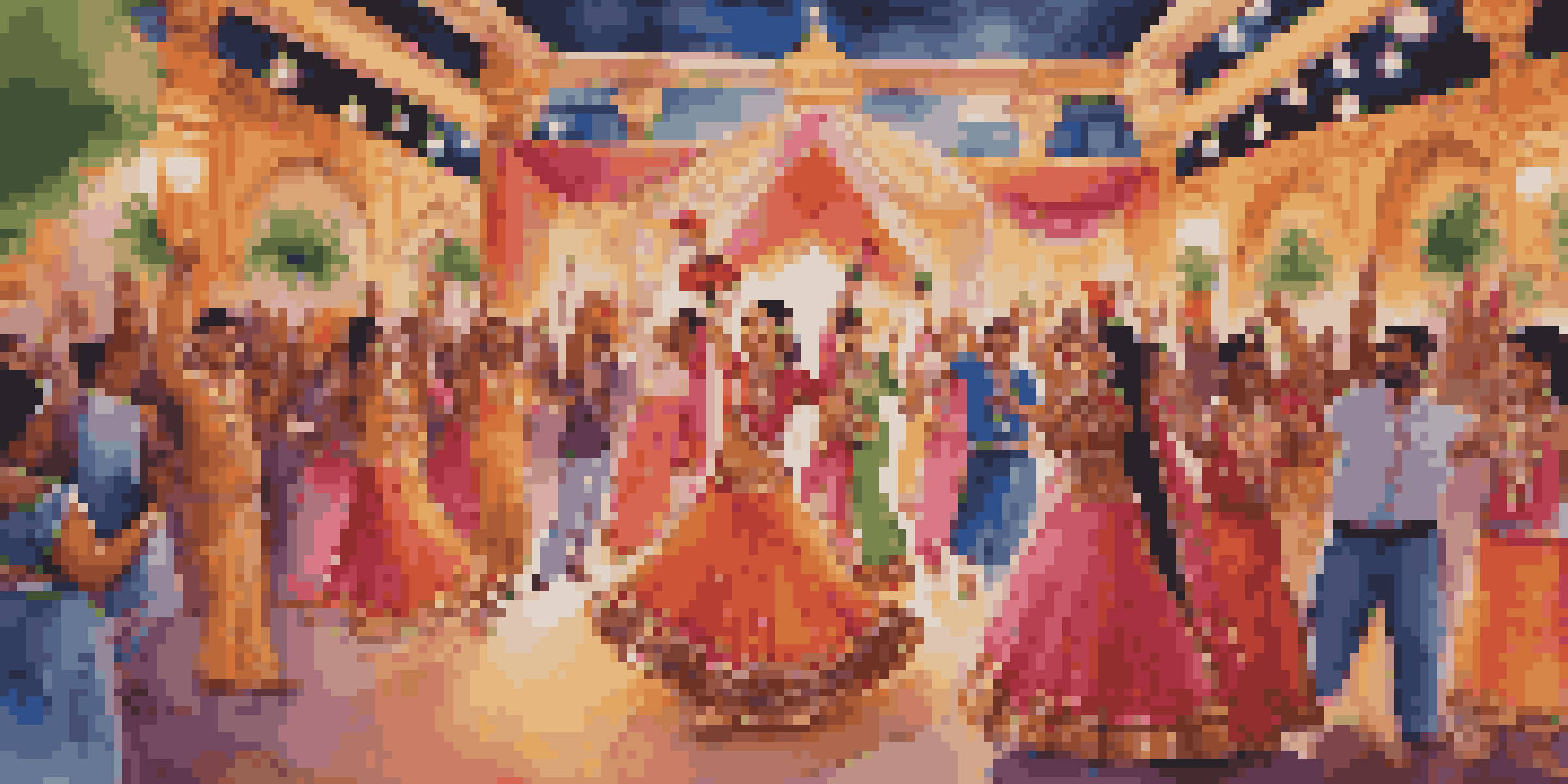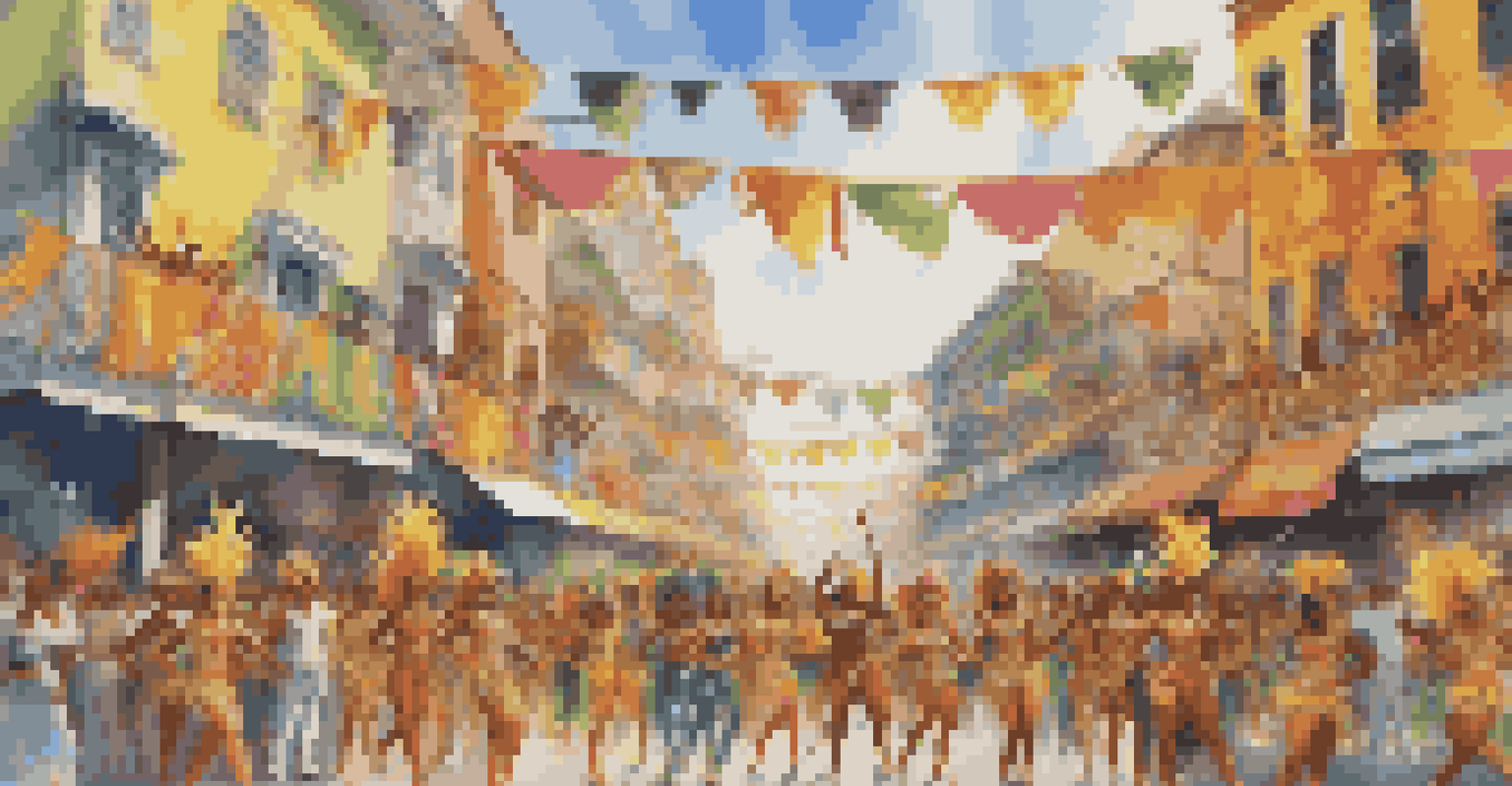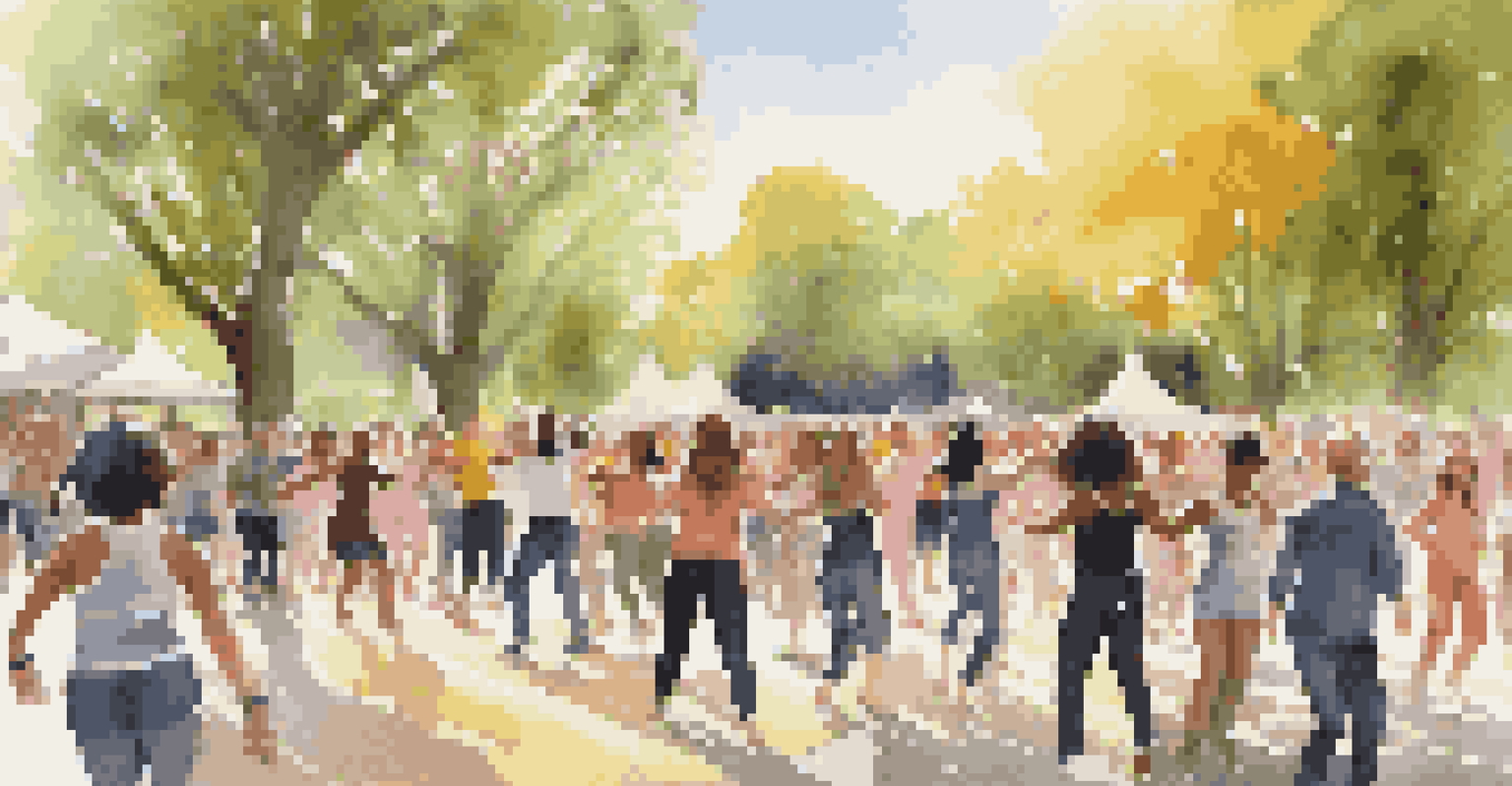The Interconnection of Dance and Music in Various Cultures Today

The Universal Language of Music and Dance
Music and dance are often described as universal languages, transcending barriers of speech and culture. No matter where you go, a rhythmic beat or a melodious tune can evoke emotions and connect people. For instance, at a wedding celebration in India, traditional music accompanies lively dance, embodying joy and togetherness. This shared experience highlights how music and dance can unite individuals from diverse backgrounds.
Music is the shorthand of emotion.
In every corner of the world, communities express their unique identities through these art forms. Take the energetic samba of Brazil, for example, where vibrant music ignites a spontaneous dance spirit during Carnival. Similarly, traditional African tribal dances often incorporate music that tells stories of ancestry and cultural heritage. These examples showcase how intrinsic music and dance are to cultural expression.
Ultimately, the interconnection of music and dance fosters a sense of belonging. Whether it's a local festival or an international dance competition, the shared rhythms create bonds that can last a lifetime. This connection is what makes both art forms so powerful and essential in human culture.
Cultural Significance of Dance and Music
In many cultures, music and dance serve as vital components of rituals and celebrations. For example, in Native American culture, dance often accompanies music during sacred ceremonies, symbolizing respect for nature and spirituality. This connection illustrates how these art forms play a role in communal identity and tradition, reinforcing shared beliefs and values.

Moreover, music and dance can be pivotal in storytelling. In cultures like the Hawaiian hula, dancers convey tales of history and legend through their movements, accompanied by traditional chants. This blend of music and dance not only entertains but also educates, passing down stories through generations. It's a beautiful reminder of how art can preserve cultural narratives.
Music and Dance Unite Cultures
Music and dance serve as universal languages that connect people across diverse backgrounds, fostering a sense of belonging.
As globalization continues to influence cultural exchange, the significance of music and dance evolves but remains deeply rooted. New genres emerge, blending traditional elements with contemporary styles, showcasing how cultures adapt while retaining their core values. This dynamic interplay enriches our understanding of each other and celebrates diversity.
The Role of Dance in Community Bonding
Dance often serves as a communal activity that brings people together, fostering a sense of belonging. From folk dances in Eastern Europe to the group dances of African tribes, these shared experiences create strong social ties. When people dance together, they not only share joy but also build relationships, reinforcing community bonds that are essential for social cohesion.
Dance is the hidden language of the soul.
Consider the flash mobs that have gained popularity in urban areas. These spontaneous gatherings demonstrate how music and dance can unite strangers in a shared experience, creating a moment of joy and surprise in everyday life. This modern interpretation of communal dance illustrates how traditions can evolve while maintaining the core idea of connection.
In essence, dance acts as a bridge that links individuals within a community. Whether through organized events or informal gatherings, the act of moving together fosters unity and strengthens ties among participants. This highlights the importance of dance as a social connector in various cultures.
Music as a Catalyst for Dance
Music often serves as the driving force behind dance, inspiring movements and styles that resonate with the rhythms. Think of the tango in Argentina, where the passionate melodies ignite an intense connection between partners. The music shapes the dance, guiding the emotions and movements, making it a beautiful interplay between sound and motion.
In contemporary dance, genres like hip-hop and street dance have emerged as powerful expressions of cultural identity, heavily influenced by the beats and lyrics of music. Dancers often draw inspiration from the music's energy, allowing them to express their individuality and experiences through movement. This synergy between music and dance creates a dynamic art form that evolves continuously.
Cultural Rituals and Storytelling
In many cultures, music and dance are integral to rituals and storytelling, preserving traditions and shared histories.
Ultimately, music acts as a catalyst for creativity in dance, pushing boundaries and inspiring innovation. As artists experiment with different sounds, new dance styles emerge, blending cultural influences and personal expressions. This ongoing evolution showcases the vibrant relationship between these two art forms.
The Influence of Technology on Dance and Music
In today's digital age, technology has dramatically changed how we create and experience dance and music. Platforms like TikTok and Instagram allow artists to share their work with a global audience, blending styles and inspiring new trends. This accessibility encourages collaboration among diverse cultures, leading to exciting innovations in dance and music.
Moreover, advances in music production technology enable artists to experiment with sounds, leading to unique fusions of genres. For instance, electronic dance music (EDM) has become a global phenomenon, often incorporating elements from various cultural music styles. This blending not only broadens the appeal of music but also invites dancers to explore new movements and interpretations.
While technology can enhance creativity, it also challenges traditional forms of dance and music. As we navigate this evolving landscape, finding a balance between innovation and cultural preservation becomes essential. Embracing technology can enrich our experiences, but it’s vital to honor the roots and significance of these art forms.
Dance and Music in Global Events
Global events often showcase the rich tapestry of dance and music, celebrating diversity on a grand scale. Festivals like the Rio Carnival or the Edinburgh Festival Fringe bring together artists from around the world, creating an immersive experience for audiences. These events highlight how interconnected dance and music can unite people, transcending geographical boundaries.
Additionally, international competitions such as 'World of Dance' allow dancers to display their skills while representing their cultural heritage. Such platforms not only promote cultural exchange but also inspire collaboration among artists from different backgrounds. This exchange fosters a greater appreciation for the uniqueness of each culture's dance and music.
Technology Shapes Artistic Expression
Advancements in technology are transforming how we create and experience dance and music, encouraging innovation while challenging traditional forms.
Ultimately, global events serve as a reminder of the power of dance and music to connect people. They provide opportunities for cultural exchange and understanding, enriching our global community. In celebrating these art forms, we embrace the shared human experience that unites us all.
The Future of Dance and Music Across Cultures
As we look to the future, the interconnection of dance and music will continue to evolve. With ongoing globalization and cultural exchange, we can expect to see new genres and styles emerge that blend traditional elements with contemporary influences. This evolution will undoubtedly enrich the artistic landscape, providing fresh perspectives and experiences.
Moreover, the increasing focus on inclusivity and representation in the arts will shape the future of dance and music. Artists from diverse backgrounds are gaining visibility, bringing their unique stories and styles to the forefront. This shift not only fosters creativity but also encourages dialogue about cultural identity and expression.

In conclusion, the future of dance and music across cultures promises to be vibrant and dynamic. As we celebrate the interconnectedness of these art forms, we embrace the beauty of diversity and the shared experiences that unite us all. The journey ahead is sure to be filled with innovation and collaboration, reflecting the rich tapestry of human culture.